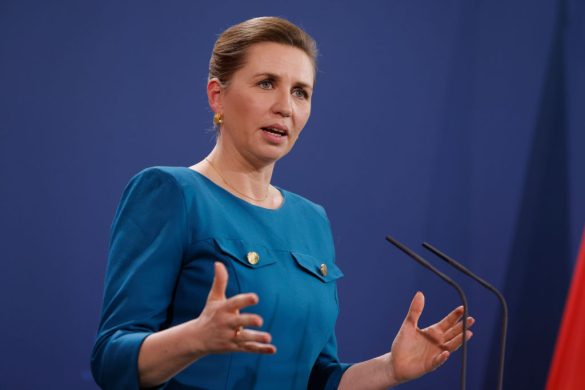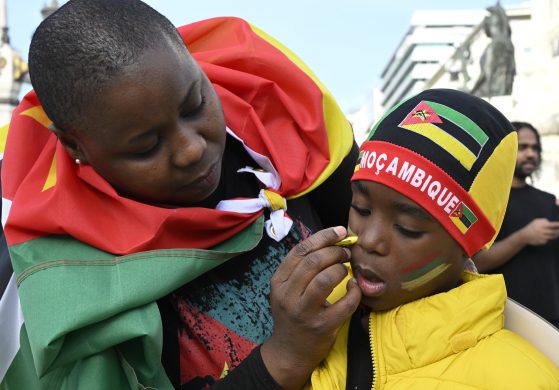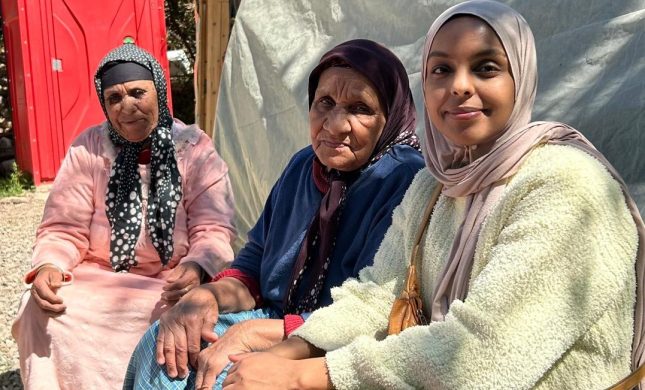Verdensbankens store årlige rapport om aktuelle udviklingsproblemer beskæftiger sig denne gang med kvinders rolle og stilling rundt om på kloden
Despite impressive gains in gender equality, nearly 4 million poor women “missing”each year in developing countries
WASHINGTON,18th September 2011: Gender equality matters in its own right but is also smart economics: Countries that create better opportunities and conditions for women and girls can raise productivity, improve outcomes for children, make institutions more representative, and advance development prospects for all, says a new World Bank flagship report.
The “World Development Report 2012: Gender Equality and Development” details big strides in narrowing gender gaps but shows that disparities (forskelle) remain in many areas.
The worst disparity is the rate at which girls and women die relative to men in developing countries: Globally, excess female mortality after birth and “missing” girls at birth account for an estimated 3,9 million women each year in low- and middle-income countries.
About two-fifths are never born due to a preference for sons, a sixth die in early childhood, and over a third die in their reproductive years.
These losses are growing in Sub-Saharan Africa, especially in countries hard-hit by HIV/AIDS.
POSTET MILLIARDER UD – MEN IKKE NOK
– We need to achieve gender equality, said World Bank Group President Robert B. Zoellick, adding:
– Over the past five years, the World Bank Group has provided 65 billion US dollar (ca. 350 milliarder DKR) to support girls’ education, women’s health, and women’s access to credit, land, agricultural services, jobs, and infrastructure.
– This has been important work, but it has not been enough or central enough to what we do. Going forward, the World Bank Group will mainstream our gender work and find other ways to move the agenda forward to capture the full potential of half the world’s population.
TÅBELIGT AT BLOKERE KVINDERS ØKONOMISKE FREMDRIFT
The report cites examples of how countries could gain by addressing disparities between men and women:
* Ensuring equal access and treatment for women farmers would increase maize yields by 11 to 16 percent in Malawi and by 17 percent in Ghana.
* Improving women’s access to agricultural inputs in Burkina Faso would increase total household agricultural production by about 6 percent, with no additional resources—simply by reallocating resources such as fertilizer and labor from men to women.
* The UN Food and Agriculture Organization (FAO) estimates that equal access to resources for female farmers could increase agricultural output in developing countries by as much as 2,5 to 4 percent.
* Eliminating barriers that prevent women from working in certain occupations or sectors would have similar positive effects, reducing the productivity gap between male and female workers by one-third to one-half and increasing output per worker by 3 to 25 percent across a range of countries.
– Blocking women and girls from getting the skills and earnings to succeed in a globalized world is not only wrong, but also economically harmful, said Justin Yifu Lin, World Bank Chief Economist and Senior Vice-President, Development Economics, noting:
– Sharing the fruits of growth and globalization equally between men and women is essential to meeting key development goals.
MEN NÅR DET GÆLDER UDDANNELSE, ER DET GÅET STÆRKT
The report also notes that the world has made significant progress in narrowing gender gaps in education, health and labor markets over the past 25 years. Disparities between boys and girls in primary education (grundskoletrin) have closed in almost all countries.
In secondary education, these gaps are closing rapidly, and in many countries, especially in Latin America, the Caribbean and East Asia, it is now boys and young men who are disadvantaged.
Among developing countries, girls now outnumber boys in secondary schools in 45 countries, and there are more young women than men in universities in 60 countries.
Similar progress can be seen in life expectancy where women in low-income countries not only outlive men but live 20 years longer than they did in 1960.
And in much of the world, gaps in labor force participation have narrowed with over half a billion women having joined the workforce in the last 30 years.
Remaining gaps include the lower school enrollments of disadvantaged girls; unequal access for women to economic opportunities and incomes, whether in the labor market, agriculture or entrepreneurship; and large differences in voice between women and men both in households and societies.
The report argues that these patterns of progress and persistence in closing gender gaps matters for development policies.
Higher incomes help close some gaps, as in education. As schools expand and more jobs open up for young women, parents see clear benefits to educating their girls.
But too often, markets and institutions (including social norms around house and care work) combine with household decisions to perpetuate disparities between men and women. As part of this, gender gaps in earnings remain stubbornly unchanged in much of the world.
4 OMRÅDER HVOR DER SKAL GANG I TINGENE
The WDR 2012 calls for action in four areas:
1) addressing human capital issues, such as excess deaths of girls and women and gender gaps in education where these persist;
2) closing earning and productivity gaps between women and men;
3) giving women greater voice within households and societies; and
4) limiting the perpetuation (forlængelse) of gender inequality across generations.
– Focused domestic public policies remain the key to bringing about gender equality, said Ana Revenga, WDR Co-Director.
– To be effective, these policies will need to address the root causes of gender gaps. For some problems, as with high maternal mortality, this will require strengthening the institutions that deliver services, noted she, adding:
– For other gaps, as with unequal access to economic opportunities, policies will need to tackle the multiple constraints –in markets and institutions- that keep women trapped in low productivity/low earning jobs.
To ensure that progress on gender equality is sustained, the international community needs to complement domestic policy actions in each of these priority areas. It can also support evidence-based action by fostering efforts to improve data, promote impact evaluation and encourage learning.
MÅ GÅ HELT NYE VEJE
The report recommends that policymakers focus on the most stubborn gender gaps that rising incomes alone cannot solve. It is by fixing those shortcomings that the payoffs to development are likely to be greatest, and where policies changes will make the most difference.
– Development partners can support domestic policies in many ways – more funding, greater innovation and better partnerships, said Sudhir Shetty, WDR Co-Director, concluding:
– Additional financing for clean water and sanitation and maternal services, for instance, will help the poorest countries. More experimentation, systematic evaluation and better gender-disaggregated data can point to ways of improving women’s access to markets.
– And, partnerships can fruitfully be expanded to include the private sector, civil society groups and academic institutions.
————–
The report is available at: http://www.worldbank.org/wdr2012
Visit us on Facebook: http://www.facebook.com/worldbank
Be updated via Twitter: http://www.twitter.com/worldbank
For our YouTube channel: http://www.youtube.com/worldbank
Kilde: Verdensbanken














